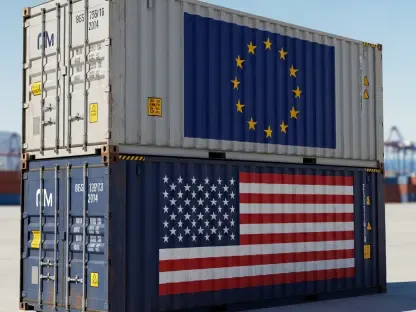What happens when a state known for its independent streak suddenly falls in line with federal mandates on a divisive issue like immigration? Nevada, once branded as a sanctuary state, has made a dramatic pivot under Republican Governor Joe Lombardo, aligning with the U.S. Department of Justice (DOJ) in a move that has stunned observers and ignited fierce debate. This shift, marked by a formal agreement, raises critical questions about timing, political strategy, and the impact on communities caught in the crossfire of national policy battles. The story unfolding in Nevada is not just about laws—it’s about people, power, and the future of state-federal relations.
A Sudden Shift in Nevada’s Immigration Policy
Nevada’s recent decision to cooperate fully with federal immigration enforcement represents a stark departure from its past. For years, the state was seen as resistant to federal overreach, often prioritizing local control over immigration matters. Now, under Governor Lombardo’s leadership, a Memorandum of Understanding (MOU) with the DOJ has dismantled the sanctuary label, signaling a new era of compliance with the Trump Administration’s stringent agenda. This abrupt change has left many wondering what prompted such a decisive turn at this particular moment.
The timing appears tied to broader national pressures and political currents. With immigration remaining a lightning rod issue across the country, Nevada’s alignment could be seen as a strategic move to curry favor with federal authorities or to bolster Lombardo’s standing among conservative voters. Yet, this shift also risks alienating significant portions of the state’s diverse population, particularly in urban centers like Las Vegas, where immigrant communities have deep roots. The stakes of this policy reversal are high, setting the stage for a contentious debate about identity and governance.
The Historical Context of Nevada’s Immigration Policies
To grasp the significance of this change, a look at Nevada’s evolving stance on immigration is essential. Historically, the state has wrestled with balancing the needs of its residents against federal expectations, often leaning toward policies that shielded local communities from aggressive enforcement. This tension mirrored a national struggle, as states across the U.S. have grappled with defining their role in immigration—a domain traditionally under federal purview. Nevada’s past resistance earned it the sanctuary designation from the DOJ, a label that symbolized defiance but also invited scrutiny.
Recent years, however, have seen growing friction as federal policies tightened. The push for compliance has intensified, with the current administration emphasizing national security and legal uniformity. Nevada’s decision to abandon its previous posture reflects not just a local shift but also a capitulation to these mounting external forces. This historical backdrop underscores how the state’s current alignment is less a sudden whim and more the culmination of a long-brewing conflict between autonomy and obligation.
Details of the Memorandum of Understanding
At the core of Nevada’s policy shift lies the MOU with the DOJ, a document that outlines a comprehensive framework for cooperation. Under this agreement, the state commits to strict adherence to federal immigration laws, a significant departure from earlier reluctance. Additionally, resources such as the Nevada National Guard are now allocated for administrative support in enforcement operations, while FEMA funds have been earmarked to facilitate these efforts. These provisions highlight a tangible investment in aligning state mechanisms with federal goals.
Governor Lombardo’s actions further cement this pivot, notably through his veto of Assembly Bill 217, which would have established sanctuary zones on school grounds. The DOJ’s subsequent removal of Nevada’s sanctuary label is framed as a broader warning to other states, with officials asserting that non-cooperation undermines national safety. This agreement, therefore, is not merely a local adjustment but part of a national campaign to enforce compliance, raising questions about how far federal influence will extend into state affairs.
Political Divisions and Public Reactions
The divide within Nevada’s leadership over this issue is palpable, reflecting deeper ideological rifts. Governor Lombardo has taken a firm stand, publicly declaring that the state will never harbor sanctuary policies under his watch, a position that has earned commendation from federal authorities. His resolve is evident in his frustration with legislative setbacks on related issues like fentanyl trafficking, pushing him to assert executive authority in aligning with federal priorities. This stance resonates with those who prioritize law and order, yet it also sharpens the contrast with opposing voices.
Democratic Attorney General Aaron Ford, on the other hand, represents a counterpoint rooted in community protection. Through initiatives like “Know Your Rights” guides for immigrants and model policies discouraging state involvement in federal enforcement, Ford has signaled resistance to what he views as overreach. This clash, amplified by speculation of a future gubernatorial race between the two, mirrors national polarization on immigration, with experts predicting that such state-federal tensions will only intensify. Public sentiment, meanwhile, remains split, with some residents welcoming the focus on security and others fearing the erosion of trust in local governance.
Navigating the Path Forward for Nevadans
As this new policy landscape takes shape, both residents and policymakers face the challenge of adapting to altered realities. For the public, staying informed is crucial—state resources and community organizations offer updates on rights and compliance obligations, accessible through channels like the Governor’s office. Engaging with these tools can empower individuals to understand their standing amid shifting enforcement priorities. Knowledge, in this context, becomes a shield against uncertainty.
Local leaders and law enforcement, meanwhile, must tread carefully to maintain community trust while meeting federal expectations. Policymakers are encouraged to foster open communication with federal agencies to clarify roles and responsibilities under the MOU. Training programs for officers can also help align operations with the agreement’s terms without compromising local relationships. This balancing act is delicate but necessary to prevent the alienation of vulnerable populations who may feel targeted by heightened enforcement.
Looking back, Nevada’s alignment with federal immigration enforcement marked a pivotal chapter in the state’s history. The agreement with the DOJ, driven by Governor Lombardo’s uncompromising stance, reshaped how the state navigated its role in a national debate. Yet, the internal discord with figures like Attorney General Ford revealed the complexity of achieving consensus on such a charged issue. Moving forward, the focus should shift to building bridges—between state and federal entities, and among communities—to ensure that enforcement does not come at the cost of cohesion. Encouraging dialogue and transparency in policy implementation can help mitigate fears, while ongoing monitoring of the MOU’s impact will be key to addressing unintended consequences. Nevada’s journey offers a lesson for other states: alignment with federal mandates is possible, but harmony within remains the greater challenge.









